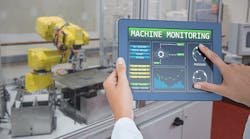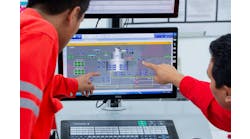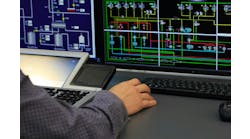Remote monitoring of machine performance in industrial facilities can mean the difference between profit or unplanned downtime. To monitor the health of machines, some industrial facilities rely on infrequent walk-arounds to gather data.
Remote monitoring allows industrial facilities to practice predictive maintenance and solve potential problems before they become major issues. By integrating a remote-monitoring system with the right sensors and data-logging functionality, plants can prevent surprise equipment failure and extend machine life.
Industrial facilities need to have the capability to quickly, accurately and cost-efficiently identify potential upcoming machine-performance issues and plan for resolution before they occur. It’s also important to stay agile, proactive and productive when managing equipment and processes for optimal results.
Also read: Is 5G the answer to Wi-Fi and LTE limitations?
Although implementing a remote machine-health monitoring system can be an extensive undertaking, here are three simple steps to make the process less challenging:
- Identify bad-actor machines. In most industrial facilities plant managers know there are machines that have chronic issues and consistently fail. Try to identify these machines by looking back at records so you can understand the causes of unplanned downtime and how often it happened. It’s also important to look at maintenance and repair records. Once you have identified these bad-actor machines, you can quickly begin to implement remote monitoring technology.
- Implement a low-impact and cost-efficient remote-monitoring technology on the problematic machines. Begin monitoring your bad-actor machines quickly by installing sensors that are easy to deploy and retrieve data. This can typically be achieved by using wireless sensors that do not require power or communication wires. The sensor installation should have the flexibility to support threaded connection, epoxy or magnetic mounting for application to a variety of machines. For added ease, some sensors allow users to utilize a free mobile app and the user can simply follow the on-screen instructions to immediately begin monitoring the problematic equipment. The sensor systems provide edge computing to process vibration spectrum data to enable in-depth analysis of the equipment health.
- Review the data collection to determine feasibility and need for further remote monitoring. Implementing this simple wireless sensing technology is safe and puts actionable data in the hands of the everyday user, empowering them to monitor and maintain equipment. Sensors should ideally be industrial-rated for hazardous environments to remove the need for users to constantly enter dangerous zones. The sensor systems provide continuous machine-health monitoring through early detection of machine failures based on vibration, temperature and run-time monitoring. Historical data through data logging provides important contextual trend information with the addition of advanced vibration-analysis tools during periods of concern. After implementation and collecting data, the system can quickly provide the user with information to diagnose the root cause of machine issues and recommended maintenance or repair actions.
As you continue down the path of remote monitoring there are many other flexible and cost-effective approaches. Recent enhancements in sensor and monitoring technology can provide greater levels of preventive diagnostics against mechanical and electrical failures across machines, helping to avoid costly downtime.
Sensor systems can even provide an Industrial Internet of Things (IIoT) asset intelligence platform that can utilize automated diagnostics to securely monitor and assess, locally or remotely, the health of machines. Vibration, temperature, pressure and other data are analyzed to detect and resolve issues that otherwise might lead to equipment breakdowns. These sensors are compatible with the existing ecosystem products for easy, secure integration with current processes and capabilities without any data lost.
Following these three simple steps is a flexible and cost-effective approach that will allow you to begin remotely monitoring machine performance in industrial facilities. However, this is only the beginning of building a broader monitoring system and really the first step in the journey.
Naveen George is product manager at ITT. Contact him at [email protected].




